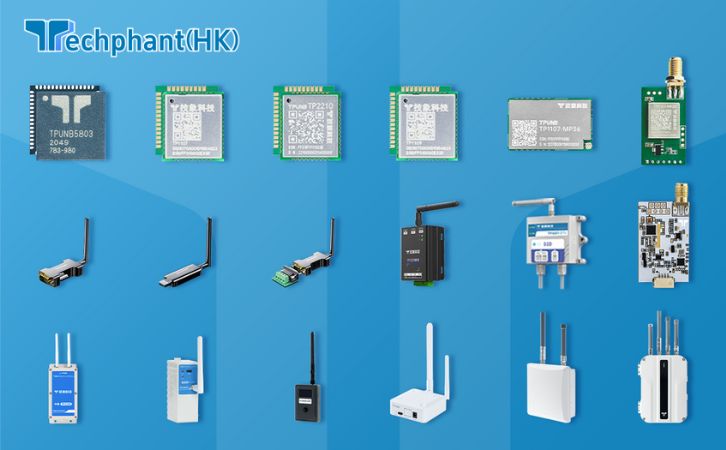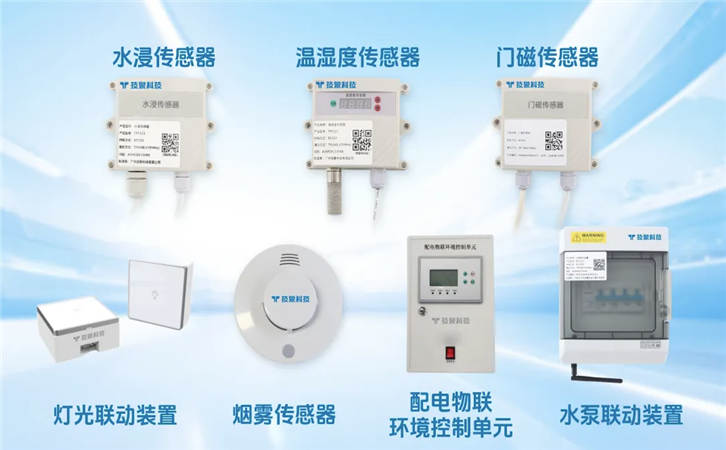Precision agriculture, driven by the Internet of Things (IoT), is transforming farming by enabling data-driven decisions to optimize crop yields, reduce resource waste, and enhance sustainability. Sub-GHz wireless technologies, operating in frequency bands below 1 GHz (e.g., 433 MHz, 868 MHz, 915 MHz), are at the forefront of this revolution due to their long-range, low-power, and robust connectivity. These characteristics make Sub-GHz ideal for connecting sensors across vast rural farmlands, where traditional networks like Wi-Fi or cellular are often unreliable or costly. This article explores how Sub-GHz technologies are revolutionizing precision agriculture, detailing their applications, benefits, and challenges across four key areas.
I. Long-Range Connectivity for Remote Farms
Sub-GHz technologies excel in providing long-range connectivity, a critical requirement for precision agriculture in remote or expansive rural areas. Unlike higher-frequency bands like 2.4 GHz, Sub-GHz signals can travel 10-20 kilometers in open environments, enabling a single gateway to cover large farms without the need for dense infrastructure. This is particularly valuable in regions with limited cellular coverage, where Sub-GHz protocols like LoRaWAN and Sigfox offer a cost-effective alternative.
For example, soil moisture sensors deployed across a 500-hectare farm can transmit data to a central LoRaWAN gateway several kilometers away, even in non-line-of-sight conditions. The low-frequency signals penetrate obstacles like trees, hills, or barns, ensuring reliable communication. This enables farmers to monitor soil conditions in real time, optimizing irrigation schedules to conserve water. In livestock management, Sub-GHz trackers on animals send location and health data over long distances, allowing farmers to detect issues like illness or straying without manual checks.
The scalability of Sub-GHz networks supports thousands of devices within a single network, making them ideal for large-scale deployments. However, challenges include regulatory variations across regions (e.g., 915 MHz in the U.S. vs. 868 MHz in Europe), which require region-specific hardware. Despite this, the long-range capabilities of Sub-GHz technologies reduce deployment costs and enable precision agriculture in areas previously underserved by connectivity, driving efficiency and productivity.
II. Low-Power Operation for Sustainable IoT Devices
Energy efficiency is a cornerstone of Sub-GHz technologies, making them ideal for battery-powered IoT devices in agriculture, where sensors may operate in remote locations without access to power grids. Sub-GHz protocols like LoRaWAN and NB-IoT are designed for low data rates (e.g., 0.3-50 kbps), minimizing the energy required for transmission. Duty-cycling techniques further reduce power consumption by keeping devices in sleep mode, waking only to send small data packets.
For instance, a Sub-GHz weather station measuring temperature, humidity, and rainfall can operate on a coin-cell battery for 10-15 years, transmitting data hourly. This longevity eliminates the need for frequent battery replacements, reducing maintenance costs and environmental impact. In smart irrigation systems, Sub-GHz sensors monitor soil moisture and send updates only when thresholds are crossed, further conserving energy. Protocols like Sigfox optimize power by using ultra-narrowband modulation, enabling devices to transmit minimal data with low energy overhead.
Challenges in low-power operation include balancing transmission frequency with battery life, as frequent updates can drain batteries faster. Additionally, energy harvesting techniques (e.g., solar or kinetic) are being explored to extend device lifespans, but inconsistent energy sources in cloudy or shaded areas pose hurdles. Nevertheless, Sub-GHz’s low-power profile ensures sustainable, long-term operation of IoT devices, making precision agriculture more viable and cost-effective.
III. Robust Data Transmission in Harsh Environments
Agricultural environments are often challenging for wireless communication, with factors like dust, rain, and physical obstructions (e.g., crops, machinery) potentially disrupting signals. Sub-GHz technologies are uniquely suited to these conditions due to their ability to penetrate obstacles and resist environmental interference. The longer wavelengths of Sub-GHz signals allow them to pass through foliage, soil, and structures, ensuring reliable data transmission.
In greenhouse automation, Sub-GHz sensors monitor temperature, humidity, and CO2 levels, transmitting data through glass or plastic walls to external gateways. LoRaWAN’s Chirp Spread Spectrum (CSS) modulation enhances robustness by spreading signals across a wide bandwidth, reducing susceptibility to noise or interference from other devices. In open fields, Sub-GHz networks maintain connectivity despite weather conditions, unlike higher-frequency technologies that struggle with signal attenuation in rain or fog.
However, Sub-GHz networks face challenges in crowded spectrum bands, where interference from other unlicensed devices (e.g., remote controls) can occur. Techniques like frequency hopping and adaptive channel selection mitigate this, but require careful network design. Additionally, Sub-GHz’s low data rate limits its use for high-bandwidth applications like video surveillance. Despite these constraints, its robustness in harsh environments makes Sub-GHz a reliable choice for agricultural IoT, ensuring consistent data delivery for informed decision-making.
IV. Integration with Data Analytics and Automation
Sub-GHz technologies enable precision agriculture by integrating with data analytics and automation systems, transforming raw sensor data into actionable insights. Sensors collect data on soil conditions, weather, or crop health, which Sub-GHz networks transmit to gateways or cloud platforms for analysis. Machine learning algorithms process this data to predict optimal planting times, detect pest infestations, or recommend fertilizer applications, enhancing farm efficiency.
For example, a Sub-GHz network of soil sensors can feed data into a cloud-based platform that analyzes moisture trends and triggers automated irrigation systems via actuators. In precision livestock farming, Sub-GHz trackers monitor animal behavior, and analytics platforms identify patterns indicating health issues, prompting timely interventions. Protocols like NB-IoT support integration with cellular backhauls, enabling seamless data transfer to remote servers, while LoRaWAN gateways often include edge computing capabilities to process data locally, reducing latency.
Challenges include ensuring interoperability between Sub-GHz devices and analytics platforms, as proprietary protocols can complicate integration. Data security is also critical, requiring encryption (e.g., AES-128 in LoRaWAN) to protect sensitive farm data from cyberattacks. Additionally, the low bandwidth of Sub-GHz limits the transmission of complex datasets, necessitating efficient compression techniques. Despite these hurdles, Sub-GHz’s role in connecting IoT devices to analytics and automation systems empowers farmers to optimize resources and boost productivity.
Conclusion
Sub-GHz technologies are revolutionizing precision agriculture by providing long-range, low-power, and robust connectivity tailored to the unique challenges of farming. Their ability to cover vast areas enables real-time monitoring in remote regions, while low-power operation ensures sustainable, maintenance-free IoT deployments. Robust signal penetration delivers reliable data in harsh environments, and integration with analytics and automation transforms data into actionable insights. Despite challenges like spectrum interference, regulatory constraints, and bandwidth limitations, Sub-GHz protocols like LoRaWAN, Sigfox, and NB-IoT are driving efficiency, sustainability, and scalability in agriculture. As IoT and AI continue to evolve, Sub-GHz will play a pivotal role in addressing global challenges like food security and climate change, shaping the future of farming.


